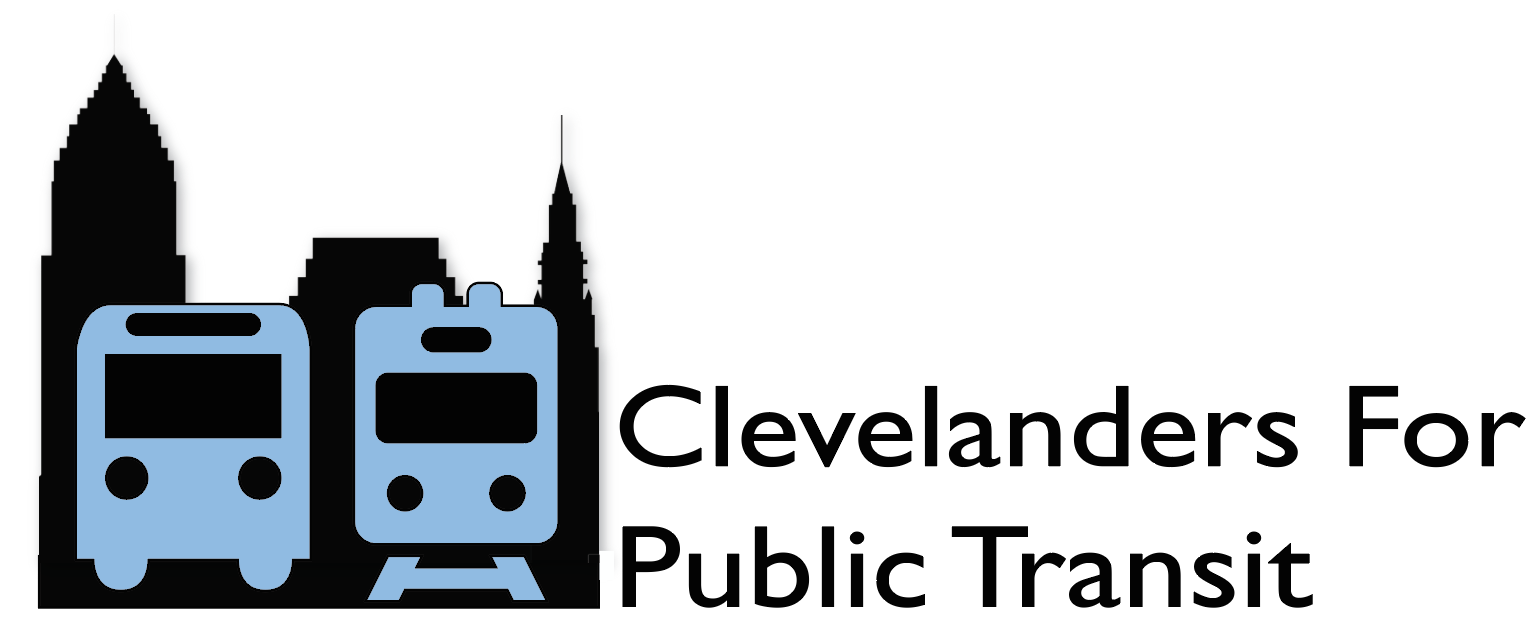
Advocates call on Mayor Jackson and the RTA to address ridership decline by implementing system-wide bus improvements
Ridership on the Greater Cleveland Regional Transit Authority (RTA) fell 7% in 2016, driven by a sharp decline in bus trips, according to data from the Federal Transit Administration’s National Transit Database (NTD). Last year, RTA experienced its lowest level of ridership in at least fifteen years, with bus ridership down 2.8 million trips, or 15 fewer trips per rider annually, an 8.5% decline over 2015. Clevelanders for Public Transit is calling on Mayor Frank Jackson and the RTA to take creative steps now to reverse this trend, using inexpensive strategies within their disposal.
The primary causes of falling transit ridership in Cleveland are twofold. First, fare hikes and service cuts reduced service on 18 bus routes and 2 rail lines went into effect in August. Additionally, the closure of Public Square required rerouting of nearly every bus line in the system, adding unnecessary delay to thousands of trips daily. These service cuts and disruptions make transit less convenient and lower rider satisfaction, causing riders to find alternative means of transportation. Further service cuts and increased fares will lead to a spiral of deteriorating service and declining ridership, a worrisome prospect for thousands of riders who depend on RTA to access jobs and educational opportunities.
This scenario can be avoided.
First, we are pleased to see Public Square reopened to transit. This reduces delays for thousands of trips system wide, makes connections easier for 20,000 riders daily, saves RTA over $800,000 in annual operational expenses, and enhances safety for pedestrians around the perimeter of the square.
Next, RTA must deliver on its own strategic recommendation to create Priority Transit Corridors along ten popular routes. As part of this process, RTA should work with Cleveland agencies and local municipalities to implement frugal bus improvements that can require little or no engineering investment, like bus-only lanes built with temporary materials and signage. Widely-cited research from TransitCenter, a national foundation that works to improve urban mobility, identifies relatively inexpensive system-wide bus enhancements that will boost ridership, including redesigned routes, dedicated bus lanes, and optimized traffic signals for bus rights of way. We have have seen these enhancements boost ridership over 20% on the Cleveland State Line on Clifton, these same strategies should be used on other Priority Transit Corridors.

RTA’s 10 priority corridors according to their Strategic Plan.
Finally, to bolster Cleveland’s economy and to ensure our workforce remains mobile and self-sufficient, Mayor Jackson and RTA must join Ohioans for Transportation Equity as advocates for a statewide $75 million dollar Transportation Innovation Fund to support local proposals for public transit. Such modest funding would be a step toward state investment in public transit commensurate with the economic benefits transit provides.
“Since they cut weekend service to Lakeview on the #81 bus, a lot of people have to pay someone to drive them to the store or the doctor, as much as $20 a trip,” said Phyllis Frelix, resident and head of the Progressive Action Council of Lakeview Tower. “Many people can’t walk half a mile uphill and across highway ramps just to get the bus.”
“The drop in ridership since August is a warning that cuts and fare increases will reduce ridership” said Chris Stocking, RTA rider and advocate. “We can’t cut our way out of this, we need to make affordable improvements to RTA.”
Riders aren’t waiting while the death spiral continues. Clevelanders for Public Transit will be kicking off a campaign to improve transit.
All are invited to join TransitCenter for a free event and panel discussion.
The event will be held 7pm on Wednesday, April 5th at Market Garden Brewery, 1947 W 25th Street.
The 22, 45, 51, 79, 81 buses and red line all stop nearby. A UH Bikes bikeshare station is also available.
